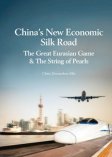“Here There Be Dragons” How Brussels is Losing Influence in Central and Eastern Europe

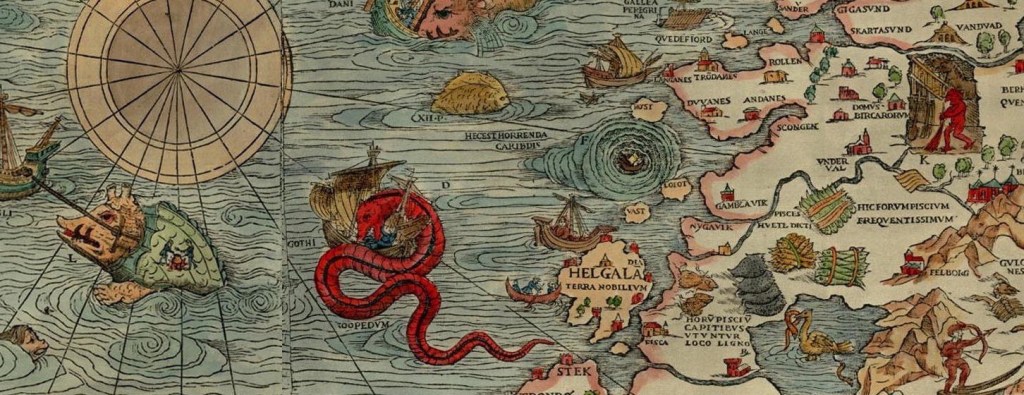
The formation by several members of the European Union and China of the “Co-Operation of China and Central Eastern Europe” (CEEC or sometimes the 16+1) has raised alarm bells in Brussels over what they see as overtures by China to divide the EU bloc, possibly in tandem with interference by Moscow.
Brussels, already reeling from the Brexit vote, is coming under increasing stress. Finland has been the latest member to state that “any financial shortfall caused by the UK pull-out should not be passed onto other member states.” Italy is having a democratic roller-coaster as populist, anti-EU politicians are putting the squeeze on the establishment, while at the very same time Brussels is serving notice on the Balkans nations that “they are part of our family” without actually offering them membership.
China, meanwhile, once again adept at institutionalizing its longer term strategic aims, is wooing Eastern Europe with detailed offers of infrastructure projects they could help finance and build, on the assumption the actual work is largely conducted by Chinese contractors. Brussels, as a multi-limbed octopus, is flailing about trying to call in its errant children from the deadly embrace of dragons.
Yet is Brussels right to be concerned?
The main two contentious issues with the EU are two fold: one, that membership automatically comes with joining NATO, and two, that the organization has evolved into becoming a federal state, and by proxy wants to keep expanding its influence. The problem with this irresistible organization is that on both counts it is meeting immovable objects: Russia, who does not want NATO alliances right on its borders, and China, who wants to keep its infrastructure juggernaut rolling so as to secure permanent supply lines to feed its massive population. Both of those strike at the heart of what Brussels now represents: an American proxy in an increasingly fractured period of US trade hegemony and its own geophysical expansionism. That is a far cry from the original aims of the EU, which was formed in 1952 as a “European Community” with just six members: Belgium, France, Italy, Luxembourg, the Netherlands, and West Germany. The original aim was to prevent a repeat of European wars, secure food supplies, and create a “Common Market” – which today would be called a “Free Trade Zone.”

Today it is has absorbed the north-eastern ex-Soviet states of Estonia, Latvia and Lithuania, bringing NATO up to Russia’s border near to St. Petersburg, has attempted to woo both Georgia and Ukraine – both of which sparked military conflicts – and is currently looking at how to integrate the eastern Balkans states, parts of which have strong historic ties to Islam rather than predominantly Christian Europe. Turkey, which has also declared itself a Muslim state under President Erdogan rather than its previous position as a secular nation, has also been discussing EU membership, despite the fact much of the country actually lies geographically in Asia. This expansion mode – still continuing – touches upon fault lines within Europe both ancient and modern, from the remnants of the Ottoman Empire to the division of the East and West under Stalin, Roosevelt, and Churchill, to the subsequent break up of the Soviet Union. The issue Brussels and NATO seem to adopt however is a very “European” one, and Western European at that. Such geographically biased thinking does not sit well with different, historically determined thought processes further east, and has already contributed to unrest and conflict. Russia sits uneasily and warily on NATO borders, with China and its trade behemoth just behind it.
Yet all Russia really wants to be is left alone – with a buffer area between the Motherland and the economic might of an highly EU influential France and Germany. Its a matter of twice bitten, thrice shy for Moscow, twice badly burned by World Wars and invasions from Napoleon and the Nazis. It may be uncomfortable for Brussels to acknowledge historical facts, but the Russians do and wish to maintain a distance. The EU sanctions are being seen as an overstated punishment for the situation in Crimea (its worth remembering that the immediate post-WWII conferences between Russia, Great Britain and the United States took place in Crimea, then very much under Moscow’s control, just as it had been since Catherine the Great wrestled it away from the Turks in 1783). Moscow wants to maintain buffers between it and the strong European powers. They’ve been invaded twice losing millions each time. The EU and NATO wish to challenge that position.
China meanwhile is driven by economic need and domestic consumption to develop supply chains right across Eurasia, and that includes to the borders of Europe. In fact, unlike the invading Mongols under Chinghhis Khaan, both Russia and China are increasingly co-ordinating their efforts to build infrastructure to the EU. They have also just agreed a Free Trade deal, with China signing up to the Eurasian Economic Union, an agreement that has the potential to see Chinese goods turn right up on the EU’s borders. India is also shortly to join the same Free Trade Area.
And here’s the rub: the EU’s growth rate is expected to be about 1.7 percent over the next few years. That’s actually the same as Russia, although they have the not yet factored in FTA with China and India as well. But the EU does not have such agreements. The IMF figures quoted for Russia also do not tally with Moscow, who has stated its expects growth rates to be about double that of the EU as moves to counter sanctions and re-balance their economy to that of Asia start to kick in from 2019. As for the impact of the FTA that both China has already signed and India is about to with the Russian backed EAEU, that is likely to significant – China’s economy is slowing but will still show growth of between 5-6 percent, while Indian GDP growth will climb over 8 percent.
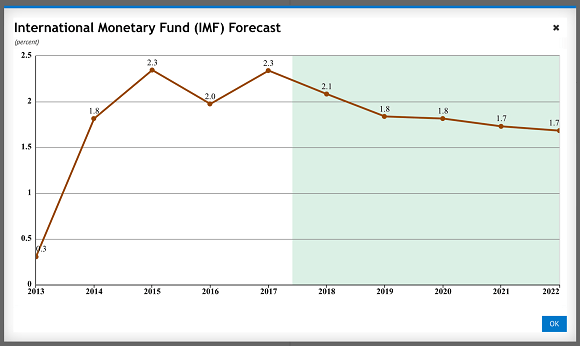
IMF European Union GDP Growth Forecast
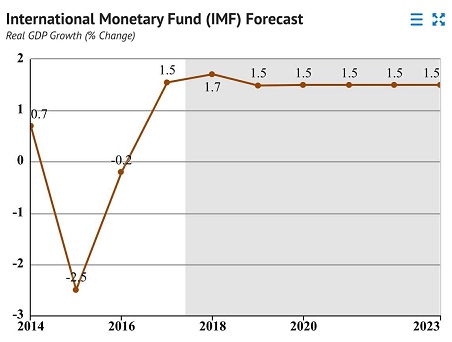
IMF Russian GDP Growth Forecast
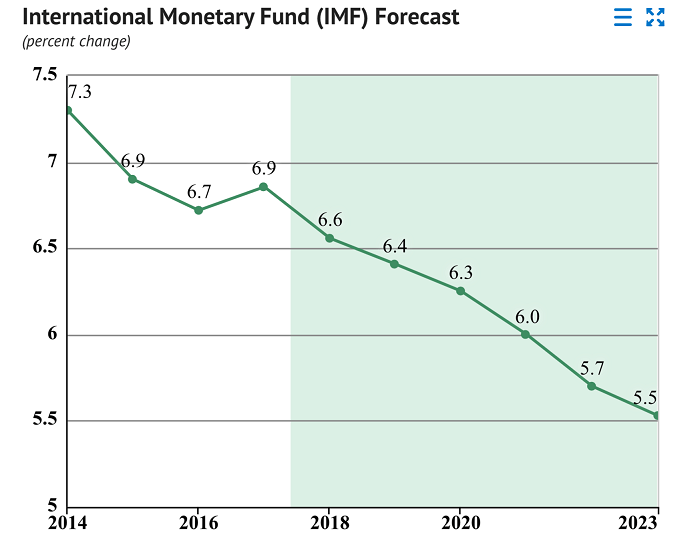
IMF China GDP Growth Forecast
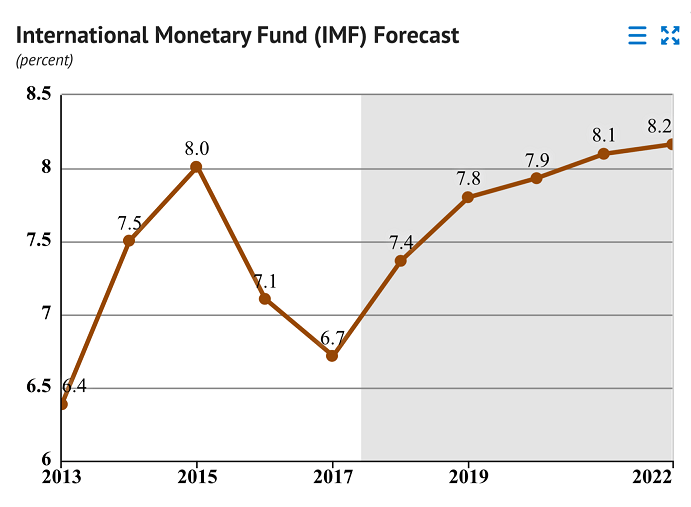
IMF India GDP Growth Forecast
This means an economic growth comparison starts to come into play. With the CEEC nations all to the east and enjoying meetings with senior level Beijing government trade officials – the next meeting is next month in Sofia – growth rates of 1.7 percent in the EU start to look unappealing. These are democratically elected officials, they need to deliver in order to stay in office and keep their jobs. Many retain strong links to Moscow, know the historical aspect and are sympathetic. With Russia behind the EAEU and with Chinese and Indian growth rates and consumer bases both developing, improved relations with both Moscow, Beijing and Delhi are going to start to be of interest. Elected officials need to demonstrate investment and growth or they are out of office. Can the EU help them deliver that when being seen to be suspicious of Chinese investment and without trade agreements with China or India, and sanctions imposed upon Russia? It is going to become an increasingly relevant question.
Countries such as Hungary are already accusing Brussels of ‘interference’ when the EU insisted that the awarding of an high speed rail link to improve connections between Budapest and Belgrade in Serbia was audited and conducted to EU specifications, despite the fact it wasn’t an EU funded project and that Serbia is not an EU nation. The Chinese thought they had agreed a trilateral financing and development agreement until Brussels got involved, mainly on the insistence of “transparency”, “competitiveness” and Brussels insistence that EU members should not accept loans from non-EU countries. (The process took place a second time, the Chinese still won the bid).
The way things get done in the east is also rather different. What is now considered bribery in the EU is labelled “service” in other parts of Eastern Europe and beyond and is tolerated. The British used to engage compradors in Hong Kong, well connected individuals bridging both cultures who could “get things done”. Rates were skimmed off at between 15-20 percent of total value, no questions asked. I understand that between 2-4 percent suffices these days.
The issue here is that do people really care? If the infrastructure is built, makes lives easier and opportunities emerge, does it really matter that someone lined their pockets to get things done?
Here be dragons, bearing gifts to do just that.
With superior growth rates, an ability to get things done, no need for adhering to Western European perspectives of NATO military commitments, and an alluringly freer choice to make without having to defer to Brussels for approval, it might just be that Eastern Europeans prefer to trade with the Dragons they know rather than a Brussels they don’t. Brussels needs to think Eastern if it is to start playing trade and development games in Dragons lairs, while the Eurasian Economic Union, with its latent potential for providing China and India free trade access, might yet start to look more economically appealing in terms of infrastructure development financing and export potential than the EU itself.
About Us
Silk Road Briefing is produced by Dezan Shira & Associates. The firm provides investment intelligence, legal, tax and advisory services to foreign investors throughout the Asian region, and maintains a Belt & Road Initiative intelligence team. Please contact us at silkroad@dezshira.com or visit www.dezshira.com for further assistance.
 Related Reading:
Related Reading:
![]() China Moves in on Balkans after EU Promotes “Connectivity” rather than Membership
China Moves in on Balkans after EU Promotes “Connectivity” rather than Membership
![]() A Brave New World: China, Russia, and ASEAN Lead Eurasian Free Trade
A Brave New World: China, Russia, and ASEAN Lead Eurasian Free Trade
China’s New Economic Silk Road
This unique and currently only available study into the proposed Silk Road Economic Belt examines the institutional, financial and infrastructure projects that are currently underway and in the planning stage across the entire region. Covering over 60 countries, this book explores the regional reforms, potential problems, opportunities and longer term impact that the Silk Road will have upon Asia, Africa, the Middle East, Europe and the United States.
